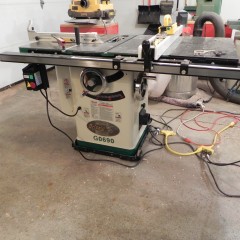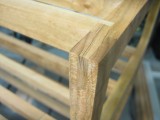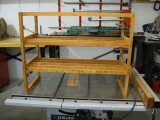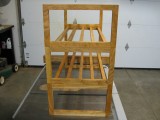It seems like every other month or so, someone asks about Baltic Birch plywood on one of the forums I frequent. I think one of reasons so many questions exist, is because there isn’t much information on the net. The following is a basic primer on Baltic Birch plywood, generated from various internet sources I’ve come across.
Region of origin – As the name implies, Baltic Birch plywood is produced from Birch trees from the Baltic region of Europe. The two main producers appear to be Russia & Finland.
Thickness – True Baltic Birch plywood only comes in metric thicknesses. The most common sizes found in North America are 6mm, 12mm, & 18mm. Additionally 3mm, 9mm, 15mm, & 25mm can occasionally be found in a narrower range of grades.
Size – You used to only be able to find Baltic Birch plywood in 5’x5′ sheets. Recently people have reported finding 4’x8′ sheets. Supposedly Manufactures have become wise to the fact that plywood comes in 4’x8′ sheets in North America, and have started producing to that size.
Continue Reading…
It’s been really cold outside and in the shop so I haven’t made much progress on the router table, other than rough cutting a few of the major components to size. Since my Bench dog lift arrived on Monday, I was able to get dimensions off of it, so I could complete the table design (seen below). I think I might need to add some bracing under the top to support the lift, as it’s a lot heavier than I expected (22 lbs. without the router mounted).
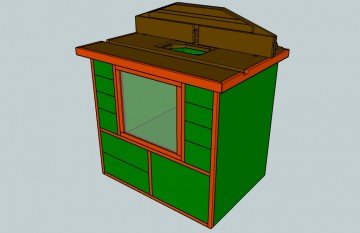
The easiest way to breakdown plywood and other sheet goods is with a “track saw”. No I’m not talking about the ones sold by Festool & DeWALT that cost as much as a contractors saw. I’m talking about the ones that cost nothing because they are made from scrap. Pictured below is the one I’m using to rough cut the panels of my router table to size. It’s made from 1/4″ Russian birch plywood, & a SYP 2×4. The only step in making one that is remotely difficult is jointing the edge of the 2×4.
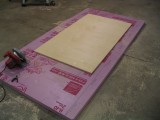
A 4'x8' sheet of 2" thick pink insulation makes an excellent sacrificial cutting surface.
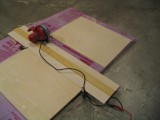
The plywood edge prevents tear out, & makes lining up cuts a cinch.
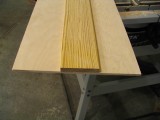
Keep the guide board thin, so it doesn't hamper your abillity to make deep cuts.
For the last two weeks I have been designing my next big project, a router table based on the NYW deluxe router station. I’m making several changes to the plans, The biggest one being that my router station needs to be mobile, so it’s designed to rest on 3″ casters. I’m also changing the bit drawer sizes, I sized the two bottom drawers to hold the longest 1/2″ bits Freud sells (4-3/4″), The top 4 drawers are sized to hold normal length 1/2″ bits, and long 1/4″ bits. The only other change worth noting, is how the back is attached. Norm used biscuits to attach the back, I’m going to use dado’s. Unfortunately since my design is based so closely on Norm’s commercially available plans I can’t post the Sketchup file, but I can post a screen shots of it. Hopefully I will have the design finished by the end of the year, and be able to start construction in early January.
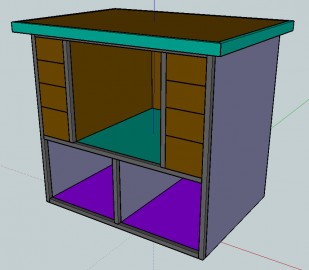
My design about 90% done.
I finished Rebecca’s shoe racks a few days ago, And tonight, I could no longer smell the finish, so it was safe to bring them inside. I had originally thought about finishing them with polyurethane, but at the last minute, I decided to finish them with boiled linseed oil cut with 50% mineral spirits. They didn’t turn out as nice as I would of liked, but Rebecca loves them none the less. The main flaw with the design is the dado joints used to join the top cross beams to the sides. Getting all of them cut to just the right length and thickness was tedious. Ultimately, I spent more time with chisels fine tuning the fit than I would have liked. If I had to do it again, I would use through dovetails.

